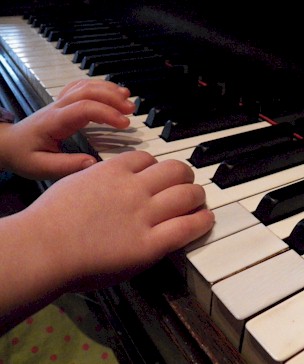This page is one I’ve looked forward to for a long time.
Consider this page buried treasure.
If I could be matrix-esque for but a moment, if I could download my brain into yours, this is where it will happen. During the teaching day, I have many moments where I wish I could share a certain teaching principle to all my students at once, or to other teachers. Here are potential topics:
- Technique ideas for piano, strings and harp
- Helpful hints for setting up a private studio
- Tips for stringing a violin, cello, or harp
- Advice for parents when purchasing an instrument
- Content & theme ideas for string programs
For starters, here is STAFF PAPER to enable your musical creativity!
Beware. I might veer seemingly off course to post tips for gymnastics, swimming, or sewing.
But before I delve into a diversion, the first topic, “Why Piano First,” is some of the best advice I ever received from one of my favorite string teachers.

When my violin students outgrow me, I have a good friend that I recommend. A while back, she began sending me her young potential violin students for piano. I didn’t understand why, so I called her. She said if students take piano first, they will know both clefs from the start of their music education. They will also have a better visual understanding of how notes are organized and all of the half step and whole step relationships.
I understood the second half: on a violin, the player can put their finger anywhere.
There aren’t white or black keys. So explaining why E and F are side by side on violin but F and G aren’t—that makes sense to show the student the piano, and will make even more sense if the student has had piano.
I didn’t fully understand the wisdom about clefs until I had a brilliant high school student. This particular student’s first music experience was taking a treble clef instrument. The student came to me for cello lessons. Even after playing fluently for several years, the student still had trouble naming bass clef notes, usually defaulting to treble clef names without often realizing it.
Then the student wanted to study piano in order to take a music test used for college placement. After knowing treble clef easily and studying bass clef for several years, I was surprised at what a daily struggle this was. And as I said previously, this was probably one of the most academically-inclined students I’ve ever had.
Then I met a music teacher who had a similar experience: he began on a single-staff instrument and still struggles to read the other clef, as well as piano.
So my advice is: no matter what instrument a student wants to pursue, INSIST they take piano first. If I have a violin student who insists on starting with violin, I insist they take piano right along side the violin for at least a year.
Even though harp reads two staves, if one of my new harp students hasn’t had piano, then we study piano at the same time. Harp strings aren’t the same as piano keys. Why is E# = F, but F# isn’t = to G? Again, this question is easily answered when a student can picture the framework provided by the piano keys.
No matter what season it is, here are tips I have found useful for CONGREGATIONAL SINGING, for both hymns and contemporary songs:
- ACCOMPANIST: clean your pedal. Now pretend we’re at the end of the Piano Guys’ Star Wars video. “You WILL clean your pedal.” “You will clean your pedal with every phrase.” There is nothing worse than listening to mud: chords running into chords. Dare I say it again?
- ACCOMPANIST: This tip plays off the previous. Once you get used to cleaning your pedal, now try inserting a bit of a pregnant pause between your intro and where folks are to start singing. It works. The silence might be frightening at first, but folks will begin to recognize what you’re doing. They will recognize the silence as their cue to start. Think about it: if you don’t clean your pedal but hold a long chord, how can people join you as you play the first note? ( This will work well if you only use a piano. If you have a band with many keyboards, it probably wouldn’t work.)
- ACCOMPANIST: If folks are wavering on the melody, play only the melody with right hand. Maybe even play it in octaves, right hand. Keep left hand the same. And if they waiver on the second verse, keep playing just the melody. It’s no fun to struggle while singing: help them out!
- ACCOMPANIST: interesting formula here. On the first verse, keep it simple. Emphasize melody. Vary accompaniment a little with each new verse, but don’t change underlying chords. Save that for the last verse.
- SINGER: referring to the previous point, sing melody on first verse. Help out other singers who might not be confident about the melody. Break into harmony on inner verses. On last verse, sing melody again to give the accompanist freedom to change underlying chords.
- SINGER: if your church uses hymnals, hold that hymnal vertically, in front of your eyes. Your singing posture will improve, and you will naturally sing louder. If you hold the hymnal by resting it on your hands as if horizontal on a table, what direction are you signing as you read? (If you sing by reading overheads, you probably won’t have this problem.)